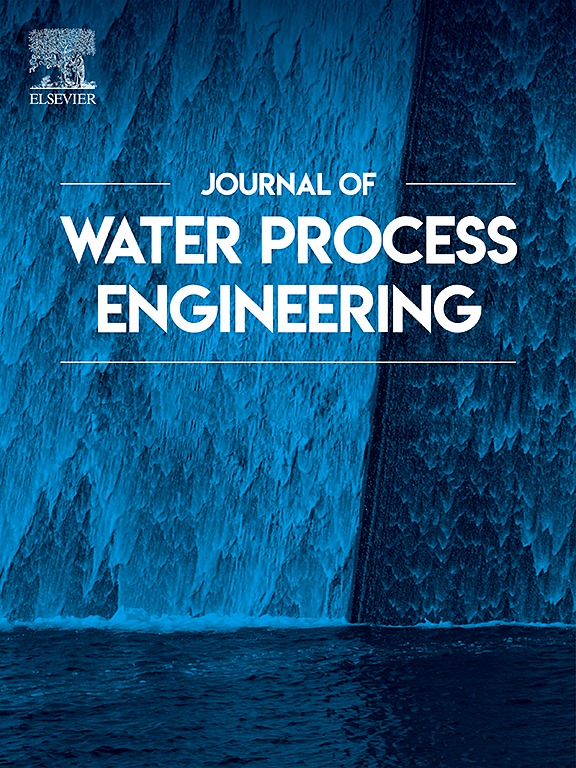Removal of ammoniacal nitrogen from aqueous medium through ultrafiltration assisted by cation-exchange-water-soluble polymers
IF 6.3
2区 工程技术
Q1 ENGINEERING, CHEMICAL
引用次数: 0
Abstract
Swine wastewater is recognized as a significant environmental concern due to its high concentrations of ammonium nitrogen (N-NH4+), which typically range from 400 to 4500 mg L−1. To address this issue, the application of polymer-enhanced ultrafiltration (PEUF) has been proposed as a method for removing N-NH4+ from aqueous media. This study utilized sodium poly(acrylate) (PNaA) and potassium poly(3-sulphopropyl acrylate) (PKSPA) as adsorbents for NH4+ removal. Key operating parameters, including pH, polymer dosage, initial NH4+ concentration, and applied pressure, were analyzed. With PNaA, the presence of divalent cations did not negatively affect the retention performance, which remained at 72 %, nor did it impact the permeate flux. In contrast, when PKSPA was used, the strong competition between NH4+, Ca2+, and Mg2+ ions for the functional groups resulted in a decrease in NH4+ retention, dropping from 71 % to 59 %, along with a lower permeate flux. The enrichment method identified a maximum N-NH4+ removal capacity of 685.7 mg N g−1 PKSPA when treating simulated wastewater from the swine industry. The observed decrease in permeate flux was attributed to the formation of macromolecular aggregates, which blocked the pores of the ultrafiltration membrane. Thus, PEUF emerges as a promising approach for the removal of N-NH4+ from swine wastewater.

求助全文
约1分钟内获得全文
求助全文
来源期刊

Journal of water process engineering
Biochemistry, Genetics and Molecular Biology-Biotechnology
CiteScore
10.70
自引率
8.60%
发文量
846
审稿时长
24 days
期刊介绍:
The Journal of Water Process Engineering aims to publish refereed, high-quality research papers with significant novelty and impact in all areas of the engineering of water and wastewater processing . Papers on advanced and novel treatment processes and technologies are particularly welcome. The Journal considers papers in areas such as nanotechnology and biotechnology applications in water, novel oxidation and separation processes, membrane processes (except those for desalination) , catalytic processes for the removal of water contaminants, sustainable processes, water reuse and recycling, water use and wastewater minimization, integrated/hybrid technology, process modeling of water treatment and novel treatment processes. Submissions on the subject of adsorbents, including standard measurements of adsorption kinetics and equilibrium will only be considered if there is a genuine case for novelty and contribution, for example highly novel, sustainable adsorbents and their use: papers on activated carbon-type materials derived from natural matter, or surfactant-modified clays and related minerals, would not fulfil this criterion. The Journal particularly welcomes contributions involving environmentally, economically and socially sustainable technology for water treatment, including those which are energy-efficient, with minimal or no chemical consumption, and capable of water recycling and reuse that minimizes the direct disposal of wastewater to the aquatic environment. Papers that describe novel ideas for solving issues related to water quality and availability are also welcome, as are those that show the transfer of techniques from other disciplines. The Journal will consider papers dealing with processes for various water matrices including drinking water (except desalination), domestic, urban and industrial wastewaters, in addition to their residues. It is expected that the journal will be of particular relevance to chemical and process engineers working in the field. The Journal welcomes Full Text papers, Short Communications, State-of-the-Art Reviews and Letters to Editors and Case Studies
 求助内容:
求助内容: 应助结果提醒方式:
应助结果提醒方式:


